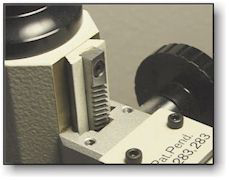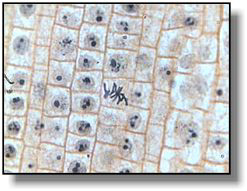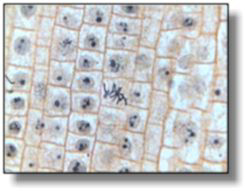When shopping for a microscope either on the web or with a catalog, the image of the instrument could look great but when the product gets into your hands, you might be disappointed.
The only way to evaluate a microscope is to thoroughly check it out. It's a lot like buying a used car. It might look great and you can kick the tires and check the oil, but there may be some serious deficiencies lurking under the hood or hidden somewhere in the frame, problems that you will only discover after you own it. So, to be safe, you take the car to a mechanic to evaluate the quality before you purchase it.
Well, that's exactly what we do when we look at different models and brands of microscopes for inclusion in our product line. We check them out in advance because we want our customers to be happy from the day their microscope arrives and discover that it is truly a quality instrument and, if properly cared for, can last a lifetime!
SOME THINGS TO LOOK FOR IN A MICROSCOPE
- Materials and workmanship: basic frame and components should be metal, although some small parts may be plastic. We evaluate the general appearance of all optical and metal surfaces.
- Check the focusing mechanism: the rack and pinion type is the most reliable and should move smoothly when the focus knobs are turned. There should be no rough spots.
 |
Referring to the image at the left:
|
|---|
- When focusing, some microscopes have a moving stage, others have a moving eyepiece tube. If the stage moves when focusing, check stage drift by pushing down slightly on the stage with fingers. It should not move. If the stage is stationary and the eyepiece tube moves, likewise check drift by slightly pushing down on the eyepiece. On a poorly built microscope, just moving the slide around on the stage will push the image out of focus! This is extremely frustrating when you are trying to move a slide around at high power.
- Look at the alignment of the stage and nosepiece: for example, if the stage is tilted just a tiny bit, your specimen will continually be out of focus on one side or the other.
- Check for "backlash" by focusing all the way to the top and bottom and try to turn the knob further, looking for slight motion. This tells you how well the rack and pinion gears are matched.
- Check the slip clutch by continuing to turn the focus knob even after reaching some resistance. Don't try this on a microscope without a slip clutch!
- Check parfocallity: with a slide on the stage, the image should remain relatively close to focus when changing objective lenses. Only a slight adjustment should be required to sharpen the image as objectives are changed.
- Check parcentricity: start with the lowest power objective and center your specimen. Move up to successive objective lenses and the area should remain relatively centered.
- Check for cleanliness: with no slide on the stage, dial in your highest power objective lens, adjust the diaphragm to the smallest opening, turn on the illuminator and look through the eyepiece lens. If you see dust particles, turn the eyepiece lens. If the dust moves, it is on the eyepiece. If it doesn't move, it is likely on the internal prisms.
The quality of the objective lenses is one of the most important characteristics of a fine microscope. The better the lenses (and usually, the more expensive the microscope!), the sharper the image. In a side by side comparison, you might be able to notice a difference!
|
|
 |
|---|---|
|
Poor Quality Objectives
|
Good Quality Objectives
|
As you can see above, purchasing a microscope is really much more complicated than merely reading the specs and looking at the pictures. You have to trust that your microscope supplier did his or her homework and isn't out trying to make a quick buck with a substandard product.
At Microscope World you will only find instruments that pass our rigid testing standards! We have chosen not to carry certain brands for various reasons. What we do carry, we are proud to sell. We hope you will choose our products for your microscope purchase. You may find microscopes for less, but we believe that what we offer will give you the best product for your investment. And if you are still not sure about Microscope World, read a compelling list of reasons that should change your mind.





